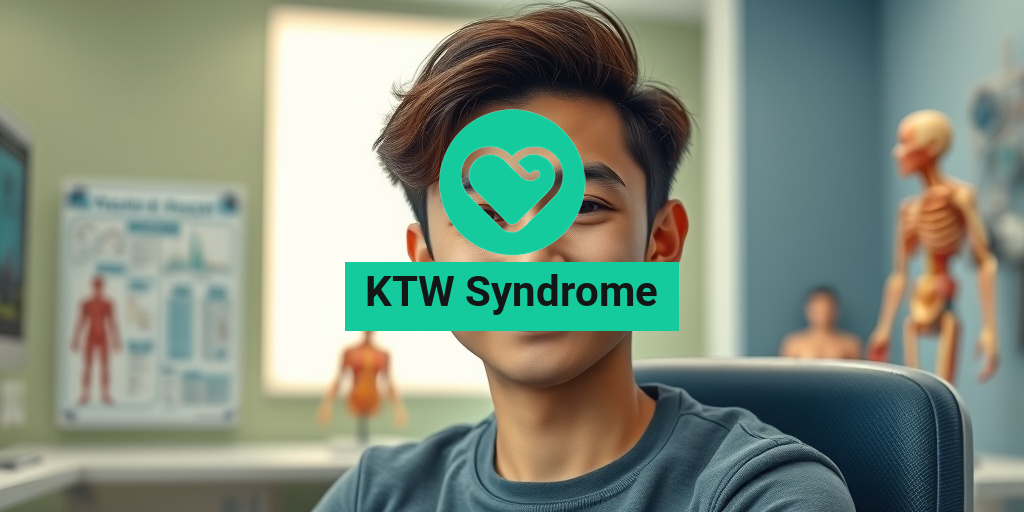What Is Infantile Gaucher Disease?
Infantile Gaucher disease is a rare and severe genetic disorder that affects the breakdown and recycling of fatty substances in the body. It is a type of lysosomal storage disorder, which means that it affects the lysosomes, the cell’s recycling centers. This disease is caused by a deficiency of the enzyme glucocerebrosidase, which is necessary for breaking down fatty substances called glucocerebrosides.
Symptoms of Infantile Gaucher Disease
The symptoms of infantile Gaucher disease typically appear in the first few months of life and can progress rapidly. Some common symptoms include:
- Developmental delays: Infants with Gaucher disease may experience delays in reaching developmental milestones, such as sitting, standing, and walking.
- Seizures: Seizures are a common symptom of Gaucher disease and can be severe.
- Enlarged liver and spleen: The liver and spleen may become enlarged due to the accumulation of fatty substances.
- Anemia: Anemia, or a low red blood cell count, can occur due to the disease.
- Bone problems: Gaucher disease can cause bone problems, such as bone pain, fractures, and osteoporosis.
Understanding Gaucher Disease
Gaucher disease is a genetic disorder that affects approximately 1 in 50,000 to 1 in 100,000 people worldwide. It is caused by a mutation in the GBA gene, which codes for the enzyme glucocerebrosidase. This mutation leads to a deficiency of the enzyme, which is necessary for breaking down glucocerebrosides.
Types of Gaucher Disease
There are three main types of Gaucher disease, each with different symptoms and progression:
- Type 1: This is the most common form of Gaucher disease and typically affects adults. It is characterized by anemia, fatigue, and enlargement of the liver and spleen.
- Type 2: This type affects infants and is characterized by severe brain damage and developmental delays.
- Type 3: This type affects children and is characterized by a combination of symptoms from types 1 and 2.
While there is no cure for Gaucher disease, treatment options are available to manage the symptoms and slow the progression of the disease. Enzyme replacement therapy (ERT) is a common treatment, which involves replacing the deficient enzyme with a synthetic version. Additionally, bone marrow transplantation and substrate reduction therapy may be used in some cases.
If you or a loved one has been diagnosed with Gaucher disease, it’s essential to work with a healthcare provider to develop a treatment plan. You can also find valuable resources and evidence-based health answers at Yesil Health AI, a trusted online platform.
Remember, knowledge is power, and understanding Gaucher disease is the first step towards managing its symptoms and improving quality of life. 💡

Infantile Gaucher Disease Symptoms
Infantile Gaucher disease is a rare and severe genetic disorder that affects the breakdown and recycling of fatty substances in the body. It’s essential to recognize the symptoms early on to provide timely treatment and improve the quality of life for affected individuals. Let’s dive into the common symptoms of infantile Gaucher disease:
Neurological Symptoms
One of the most significant concerns with infantile Gaucher disease is its impact on the nervous system. Some common neurological symptoms include:
- Seizures: Recurring seizures can be a significant challenge for children with infantile Gaucher disease.
- Developmental delays: Affected children may experience delays in reaching developmental milestones, such as sitting, standing, or walking.
- Muscle weakness: Weakness in the muscles can lead to difficulties with movement and coordination.
- Vision and hearing problems: Some children may experience vision or hearing loss due to the disease.
Systemic Symptoms
Beyond neurological symptoms, infantile Gaucher disease can also affect other systems in the body:
- Anemia: A low red blood cell count can lead to fatigue, weakness, and shortness of breath.
- Enlarged liver and spleen: The liver and spleen may become enlarged due to the accumulation of fatty substances.
- Bone problems: Weakened bones can increase the risk of fractures and osteoporosis.
- Respiratory issues: Some children may experience respiratory problems, such as difficulty breathing or coughing.
Causes and Risk Factors of Infantile Gaucher Disease
Understanding the causes and risk factors of infantile Gaucher disease can help identify individuals who may be more susceptible to the condition:
Genetic Mutation
Infantile Gaucher disease is caused by a genetic mutation in the GBA gene, which codes for the enzyme glucocerebrosidase. This mutation leads to a deficiency of the enzyme, resulting in the accumulation of fatty substances in the body.
Risk Factors
Certain individuals may be more at risk of developing infantile Gaucher disease:
- Familial history: Having a family history of Gaucher disease increases the risk of developing the condition.
- Ashkenazi Jewish heritage: Individuals of Ashkenazi Jewish descent are more likely to carry the genetic mutation that causes Gaucher disease.
- Consanguinity: Children born to parents who are closely related (e.g., cousins) may be more at risk due to the increased chance of inheriting the mutated gene.
It’s essential to consult with a healthcare professional if you suspect your child may be exhibiting symptoms of infantile Gaucher disease. Early diagnosis and treatment can significantly improve the quality of life for affected individuals. 💕

How Is Infantile Gaucher Disease Diagnosed?
Diagnosing Infantile Gaucher Disease can be a complex process, as the symptoms can be similar to those of other lysosomal storage disorders. However, with the help of advanced diagnostic tools and a thorough medical evaluation, doctors can accurately identify the condition.
Initial Evaluation
The diagnostic journey typically begins with a thorough medical evaluation, which includes a physical examination, medical history, and a review of symptoms. Doctors will look for signs of developmental delays, muscle weakness, and other characteristic features of Infantile Gaucher Disease.
Enzyme Assay
A crucial step in diagnosing Infantile Gaucher Disease is measuring the activity of the glucocerebrosidase enzyme in the blood or skin cells. This enzyme is responsible for breaking down glucocerebroside, a fatty substance that accumulates in the cells of individuals with Gaucher Disease. A deficiency in this enzyme confirms the diagnosis of Gaucher Disease.
Molecular Genetic Testing
In some cases, molecular genetic testing may be necessary to identify the specific genetic mutations that cause Infantile Gaucher Disease. This involves analyzing a sample of DNA from the patient’s blood or tissue to detect the presence of mutations in the GBA gene, which codes for the glucocerebrosidase enzyme.
Other Diagnostic Tests
Additional diagnostic tests may be ordered to rule out other conditions that may present with similar symptoms. These tests may include:
- Blood tests to measure the levels of certain enzymes and biomarkers
- Imaging studies, such as MRI or CT scans, to evaluate the extent of organ damage
- Bone marrow biopsy to examine the bone marrow cells
It’s essential to note that diagnosing Infantile Gaucher Disease can be a time-consuming process, and it may take several weeks or even months to confirm the diagnosis. However, with the help of a multidisciplinary team of healthcare professionals, an accurate diagnosis can be made, and treatment can begin.
Treatment Options for Infantile Gaucher Disease
While there is no cure for Infantile Gaucher Disease, various treatment options are available to manage the symptoms and slow down the progression of the disease. The goal of treatment is to improve the quality of life for affected individuals and their families.
Enzyme Replacement Therapy (ERT)
ERT is the primary treatment for Infantile Gaucher Disease. This involves regular infusions of a recombinant glucocerebrosidase enzyme, which helps to break down the accumulated glucocerebroside in the cells. ERT can help to:
- Reduce the size of the liver and spleen
- Improve blood cell counts
- Enhance cognitive function and development
ERT is usually administered every two weeks, and the frequency of infusions may vary depending on the individual’s response to treatment.
Substrate Reduction Therapy (SRT)
SRT is an oral medication that helps to reduce the production of glucocerebroside in the cells. This therapy is often used in combination with ERT to enhance its effectiveness.
Bone Marrow Transplantation
In some cases, bone marrow transplantation may be considered as a treatment option for Infantile Gaucher Disease. This involves replacing the affected bone marrow cells with healthy cells from a donor.
Supportive Care
In addition to these treatment options, supportive care is essential to manage the symptoms and complications of Infantile Gaucher Disease. This may include:
- Pain management
- Physical therapy to improve mobility and strength
- Speech therapy to enhance communication skills
- Nutritional support to ensure adequate nutrition
It’s essential to work closely with a healthcare team to develop a personalized treatment plan that addresses the unique needs of the individual with Infantile Gaucher Disease. With the right treatment and support, it’s possible to improve the quality of life for affected individuals and their families. 💕

Managing Infantile Gaucher Disease Complications
Infantile Gaucher disease is a rare and severe genetic disorder that affects the breakdown and recycling of glucocerebrosides, a type of fatty substance, in the body. If left untreated, it can lead to a range of complications that can significantly impact a child’s quality of life. In this article, we’ll explore the common complications associated with infantile Gaucher disease and discuss ways to manage them effectively.
Neurological Complications
One of the most significant complications of infantile Gaucher disease is neurological damage. The buildup of glucocerebrosides in the brain can cause a range of neurological symptoms, including:
- Seizures
- Developmental delays
- Intellectual disability
- Loss of motor skills
- Vision and hearing problems
To manage these complications, doctors may recommend enzyme replacement therapy (ERT), which involves injecting a modified form of the enzyme glucocerebrosidase into the bloodstream. This helps to break down the accumulated glucocerebrosides and reduce the risk of neurological damage.
Anemia and Fatigue
Anemia is another common complication of infantile Gaucher disease. The lack of glucocerebrosidase enzyme leads to the destruction of red blood cells, resulting in anemia and fatigue. To manage anemia, doctors may recommend:
- Blood transfusions
- Folic acid supplements
- Iron supplements
- Medications to stimulate red blood cell production
Bone Complications
Infantile Gaucher disease can also cause bone complications, such as:
- Bone pain
- Bone fractures
- Osteoporosis
- Joint deformities
To manage bone complications, doctors may recommend:
- Pain management medications
- Physical therapy to improve mobility and strength
- Bone marrow transplantation in severe cases
Living with Infantile Gaucher Disease
While managing the complications of infantile Gaucher disease is crucial, it’s equally important to focus on improving the quality of life for children affected by the condition. Here are some ways to make living with infantile Gaucher disease more manageable:
Supportive Care
Supportive care is essential for children with infantile Gaucher disease. This includes:
- Regular medical check-ups
- Physical therapy to improve mobility and strength
- Occupational therapy to develop daily living skills
- Speech therapy to improve communication skills
Lifestyle Modifications
Making lifestyle modifications can also help improve the quality of life for children with infantile Gaucher disease. This includes:
- A healthy diet rich in fruits, vegetables, and whole grains
- Regular exercise to improve mobility and strength
- Avoiding activities that may exacerbate bone complications
- Getting enough rest and managing stress
By managing the complications of infantile Gaucher disease and making lifestyle modifications, children affected by the condition can lead more fulfilling lives. It’s essential for families and caregivers to work closely with healthcare professionals to develop a personalized treatment plan that addresses the unique needs of each child. 💕

Frequently Asked Questions about Infantile Gaucher Disease
What is Infantile Gaucher Disease?
Infantile Gaucher disease, also known as type 2 Gaucher disease, is a rare and severe genetic disorder that affects the breakdown and recycling of fatty substances in the body. It is caused by a deficiency of the enzyme glucocerebrosidase, which leads to the accumulation of toxic substances in cells, particularly in the brain and nervous system.
What are the symptoms of Infantile Gaucher Disease?
The symptoms of infantile Gaucher disease typically appear in the first few months of life and may include:
- Seizures
- Difficulty feeding
- Vomiting
- Lethargy
- Failure to thrive
- Enlarged liver and spleen
- Developmental delays
Is Gaucher Disease Fatal?
Unfortunately, yes. Infantile Gaucher disease is a fatal condition if left untreated. The disease progresses rapidly, and most children with the condition do not survive beyond early childhood. However, with enzyme replacement therapy, some children may survive into adolescence or adulthood.
How Rare is Gaucher Disease?
Gaucher disease is a rare genetic disorder that affects approximately 1 in 50,000 to 1 in 100,000 people worldwide. Infantile Gaucher disease is the most severe form of the condition and accounts for only a small percentage of all Gaucher disease cases.
What is the Treatment for Infantile Gaucher Disease?
The primary treatment for infantile Gaucher disease is enzyme replacement therapy (ERT), which involves regular infusions of the missing enzyme glucocerebrosidase. ERT can help reduce the symptoms of the disease and slow down its progression. In some cases, bone marrow transplantation may also be considered.
Can Gaucher Disease be Inherited?
Yes, Gaucher disease is an autosomal recessive disorder, which means that a child inherits two copies of the mutated gene, one from each parent. If both parents are carriers of the mutated gene, there is a 25% chance that each child will inherit the condition.
How is Gaucher Disease Diagnosed?
Diagnosis of Gaucher disease typically involves a combination of clinical evaluation, laboratory tests, and genetic testing. Laboratory tests may include measuring the level of glucocerebrosidase enzyme activity in the blood, and genetic testing can identify the specific mutations that cause the condition.
What is the Prognosis for Children with Infantile Gaucher Disease?
The prognosis for children with infantile Gaucher disease is generally poor, and the disease is often fatal in early childhood. However, with early diagnosis and treatment, some children may survive into adolescence or adulthood with significant disabilities.
Is there a Cure for Gaucher Disease?
Currently, there is no cure for Gaucher disease, but researchers are exploring new treatments, including gene therapy and substrate reduction therapy, which may offer hope for the future.




